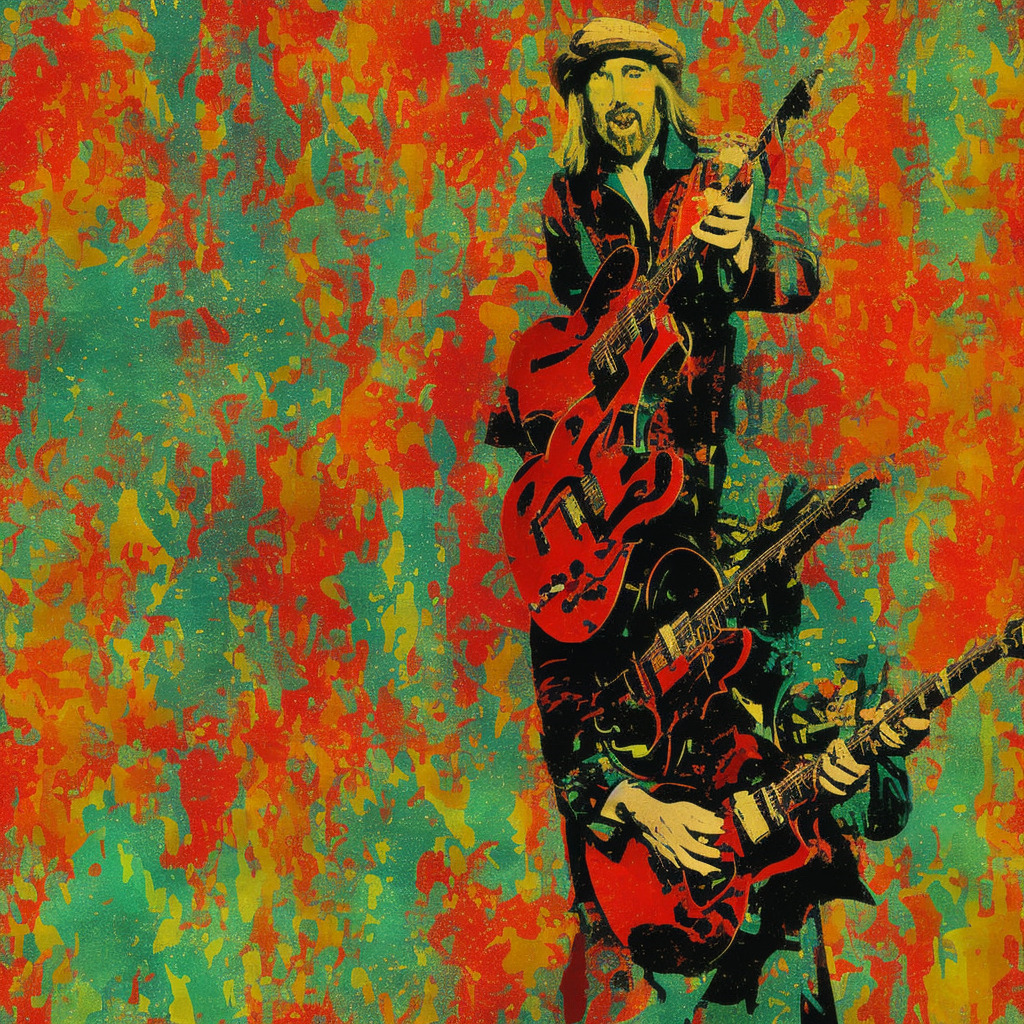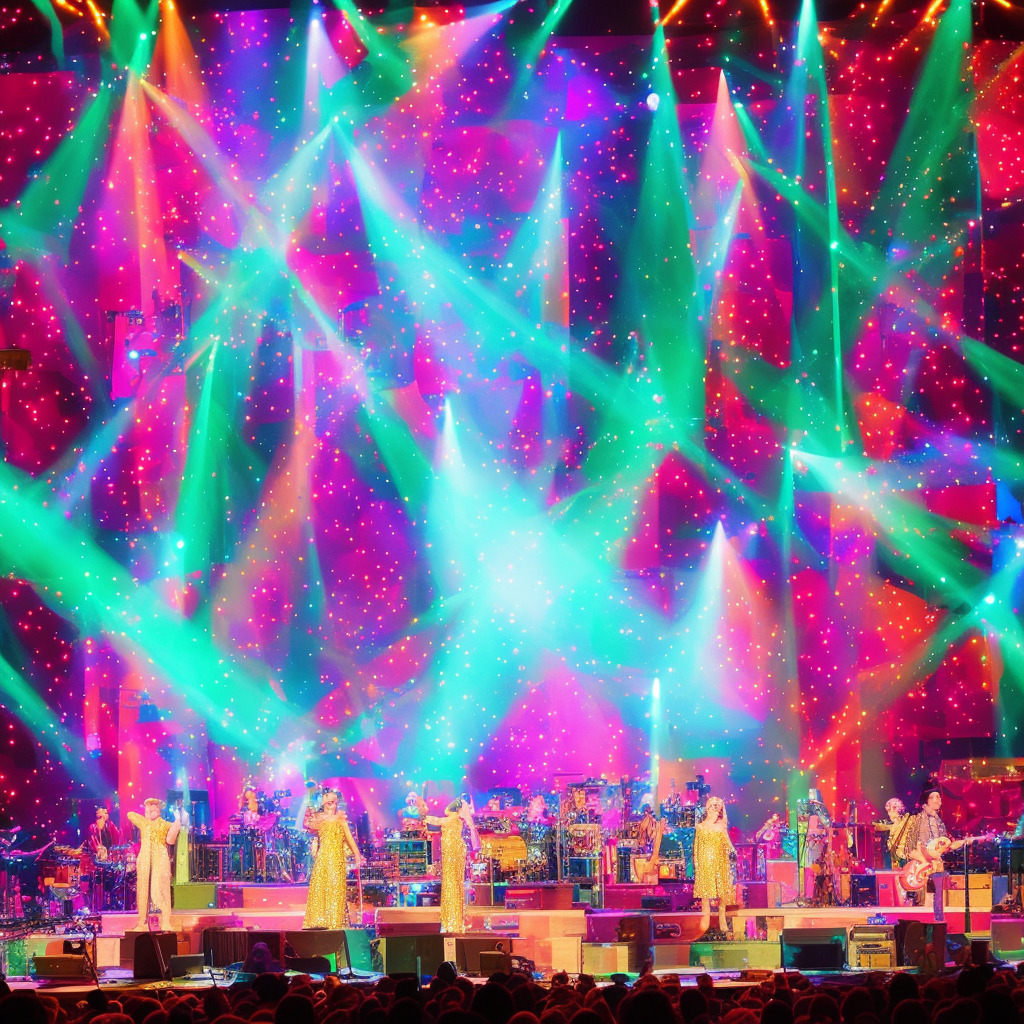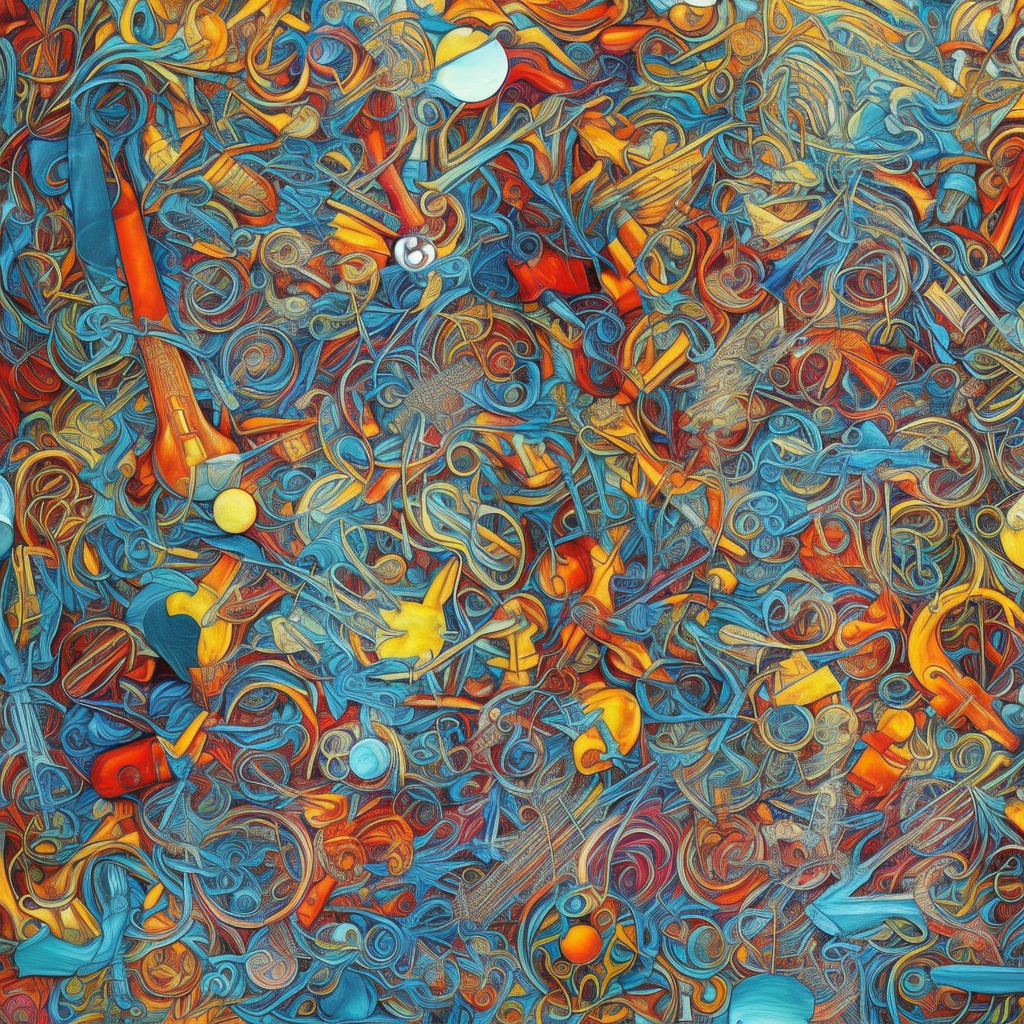🎸 “Mary Jane” by Tom Petty: Did you know the iconic 1993 classic is actually about a breakup and not what you think? 😉 Embrace life’s last dances! 🕺 #TomPetty #MaryJanesLastDance #90sRock #FunFact #MusicTrivia Read about it: tinyurl.com/2du9t2r3
Delving Deeper into Tom Petty’s Timeless Classic
Dive into the rich legacy of Tom Petty and the Heartbreakers, as we explore their timeless classic, “Mary Jane’s Last Dance,” and the indelible mark they’ve left on rock music history.

Tom Petty, an American singer-songwriter and guitarist, formed the band Tom Petty and the Heartbreakers in 1976, cementing his place in rock history. The band’s original lineup consisted of Tom Petty as the lead vocalist and guitarist, Mike Campbell as the lead guitarist, Ron Blair on bass, Stan Lynch on drums, and Benmont Tench on keyboards. Throughout the years, the lineup underwent several changes, with Scott Thurston, Steve Ferrone, and Howie Epstein becoming key members of the group at various points in time. Petty’s blend of heartland rock, crucial guitar riffs, and a unique voice made him and his band stand out in the ever-evolving rock scene.
The song “Mary Jane’s Last Dance,” released in 1993, is one of Tom Petty and the Heartbreakers’ most iconic tracks. Featured on their “Greatest Hits” album, the song is known for its hypnotic guitar riff, compelling storytelling, and Petty’s signature vocal delivery. “Mary Jane’s Last Dance” showcases the band’s ability to create a moody and immersive atmosphere while exploring themes of longing, love, and growing older.
Though Tom Petty and the Heartbreakers have garnered both critical acclaim and commercial success throughout their career, they have not been without their fair share of controversies. Petty himself admitted to occasionally using heroin in the late 1990s, and their induction into the Rock and Roll Hall of Fame in 2002 was marred by a public spat between Petty and drummer Stan Lynch. However, these incidents do not detract from the immense legacy and influence that the band has had on the music industry and countless musicians who came after them.
Tom Petty and the Heartbreakers have won numerous awards and accolades during their extensive career, including three Grammy Awards, 18 different Billboard Music Awards, and the aforementioned induction into the Rock and Roll Hall of Fame. Sadly, Tom Petty passed away in 2017 at the age of 66. Despite his untimely passing, his music continues to resonate with fans across the globe, and “Mary Jane’s Last Dance” remains a testament to the band’s enduring appeal.
In summary, Tom Petty and the Heartbreakers, with their deep-rooted influence on the rock music scene, have left an indelible mark on the hearts and minds of fans and fellow musicians. Their classic track, “Mary Jane’s Last Dance,” encapsulates the essence of the band’s unique storytelling and musical prowess, solidifying their well-deserved place in rock history.
Charting the Course of a Classic Hit
Navigating the timeless journey of Tom Petty’s “Mary Jane’s Last Dance” – from chart climber to rock anthem legend.

“Mary Jane’s Last Dance” by Tom Petty and the Heartbreakers was released on November 2, 1993, as part of their greatest hits album. This iconic song stands out in the music world not just as a phenomenal rock anthem but also for its chart performance.
Upon its release, the single initially entered the US Billboard Hot 100 chart at number 97. It’s worth mentioning that “Mary Jane” was the only new song included in the band’s 1993 compilation album. Despite the competition from other well-established tracks on the album, “Mary Jane” grabbed the audience’s attention and steadily climbed the charts.
The song’s peak position was number 14 on the Billboard Hot 100 chart, which it reached on February 19, 1994. This marked the sixth time that Tom Petty and the Heartbreakers had landed a Top 20 hit on the chart. It also enjoyed a solid run on the Billboard Mainstream Rock Tracks chart, where it secured the number one spot for two weeks in January 1994. Without a doubt, “Mary Jane” proved to be a significant milestone in the band’s career, garnering them new fans and cementing their status as rock legends.
In terms of international chart performance, “Mary Jane’s Last Dance” found moderate success in Canada, where it peaked at number 33 on the RPM Top Singles chart. Although the song didn’t make a huge splash globally, it has since become a beloved classic in the US and Canada.
“Mary Jane” has also made its presence felt in the digital age, with its music video amassing millions of views on YouTube. It’s safe to say that this iconic song has withstood the test of time and remains a fan favorite to this day.
Decoding the Timeless Tale of “Mary Jane”
She grew up in an Indiana town
Had a good-lookin’ mama who never was around
But she grew up tall and she grew up right
With them Indiana boys on them Indiana nights
Well, she moved down here at the age of eighteen
She blew the boys away, it was more than they’d seen
I was introduced and we both started groovin’
She said, “I dig you baby but I got to keep movin’…on, keep movin’ on”
Last dance with Mary Jane
One more time to kill the pain
I feel summer creepin’ in and I’m
Tired of this town again
Well, I don’t know, but I’ve been told
You never slow down, you never grow old
I’m tired of screwin’ up, tired of going down
Tired of myself, tired of this town
Oh, my, my, oh, hell yes
Honey, put on that party dress
Buy me a drink, sing me a song
Take me as I come ’cause I can’t stay long
Last dance with Mary Jane
One more time to kill the pain
I feel summer creepin’ in and I’m
Tired of this town again
There’s pigeons down on Market Square
She’s standin’ in her underwear
Lookin’ down from a hotel room
Nightfall will be comin’ soon
Oh, my, my, oh, hell yes
You got to put on that party dress
It was too cold to cry when I woke up alone
I hit my last number and walked to the road
The lyrics of Tom Petty’s “Mary Jane” paint a vivid picture of a young woman who is restless and unsatisfied with the mundane life in a small town. In the context of the era the song was written (1993), the United States was going through a period of economic and social change. The early ’90s marked the end of the Cold War, the rise of the internet, and a shift in music trends towards grunge and alternative rock.
The protagonist, Mary Jane, becomes a symbol of the desire to break free from the constraints of a monotonous life in favor of a more adventurous and fulfilling existence. The lyrics suggest that she is constantly moving, leaving one town for another, never staying in one place for too long – a sentiment that resonates with the restlessness that many individuals may have felt during this transformative period.
By incorporating the phrase “Last dance with Mary Jane,” Tom Petty cleverly alludes to the idea of bidding farewell to one’s past and embracing new experiences. Additionally, the mention of “summer creepin’ in” could be interpreted as a metaphor for the changing times and the encroachment of a new era, urging listeners to seize the day and make the most of their lives.
In conclusion, the lyrics of “Mary Jane” are a poetic reflection of the spirit of the time, capturing the essence of an era marked by change and uncertainty.
Exploring the Visuals: The “Mary Jane” Music Video
Unearthing fan-made visual gems: Tom Petty’s “Mary Jane” transcends time and mediums, showcasing the enduring impact of an iconic track.
Diving into the visual aspects of Tom Petty’s “Mary Jane,” it’s important to note that there isn’t an official music video for the song. However, this hasn’t stopped fans from creating their own interpretations and visual tributes to this iconic track. These fan-made videos and montages truly showcase the power of Petty’s music and the impact it has had on listeners over the years.
One of the most popular fan-made videos for “Mary Jane” is a live performance compilation, highlighting some of the most memorable moments from Tom Petty and the Heartbreakers’ concerts. This video captures the raw energy and emotion of their live shows while featuring the band’s incredible musicianship. Watching Petty perform this classic song on stage, it’s evident that he poured his heart and soul into his music.
Another notable tribute video combines footage from the 1994 movie “The Mask,” starring Jim Carrey, with “Mary Jane” as the soundtrack. This unique juxtaposition of the song with the film’s comedic and action-packed scenes creates a captivating visual experience for viewers. The choice of this particular movie is fitting, as “The Mask” was released in the same year as Tom Petty’s “Wildflowers” album, which features “Mary Jane.”
A more recent fan-made video takes an artistic approach by using a combination of animation and live performance clips to bring the song to life. This interpretation showcases the versatility of Petty’s music, as it seamlessly blends different visual styles to create a captivating montage. The use of animation adds a fresh and modern touch to the classic track, proving that Tom Petty’s music continues to resonate with listeners of all ages.
While there might not be an official music video for “Mary Jane,” the creativity and dedication of Tom Petty’s fans ensure that the song lives on through these visual tributes. Each video brings its own unique perspective and interpretation to the track, adding an extra layer of depth and appreciation for the song and the artist who created it.
The Composer Behind “Mary Jane”
Delving into the mind of the composer behind the song “Mary Jane,” we find none other than the legendary Tom Petty himself. Known for his versatile talents in songwriting, singing, and guitar playing, Petty’s career has left an indelible mark on the landscape of rock music. Apart from penning “Mary Jane,” Petty also composed other notable hits such as “Free Fallin’,” “I Won’t Back Down,” “American Girl,” “Learning to Fly,” and “Refugee.” These songs showcase his innate ability to create memorable tunes and poignant lyrics that resonate with fans across generations. As a master composer, Petty’s contributions to the music world have undoubtedly placed him among the pantheon of rock greats.
Accolades, Appearances and Cover Versions
“Mary Jane”: A Timeless Rock Anthem – Celebrated across decades, genres, and media, Tom Petty’s iconic hit continues to inspire covers and captivate audiences.

Since its release in 1993, “Mary Jane” has been widely celebrated and has garnered numerous accolades over the years. The song’s melancholic lyrics and Tom Petty’s signature vocal delivery struck a chord with audiences, earning it a place among the most iconic rock songs of the 90s.
As a testament to its enduring appeal, “Mary Jane” has appeared in various forms of media. The song has found its way into movies, television shows, and video games, further solidifying its cultural significance. For instance, in 1994, the song was featured in the soundtrack of the movie “Chasers” featuring Tom Berenger, while in the television realm, it made an appearance during an episode of “Scrubs.” Additionally, “Mary Jane” was included in the popular music video game “Rock Band 4,” which allowed players to perform the song with their virtual bands.
Over the years, “Mary Jane” has inspired numerous artists to create their own cover versions, showcasing the song’s versatility and wide-ranging influence. One notable cover was performed by John Mayer in 2008 at the Nokia Theatre, where he delivered a soulful, acoustic rendition of the classic, reflecting his admiration for Tom Petty’s songwriting prowess. Meanwhile, alternative rock band The Gaslight Anthem also paid tribute to “Mary Jane” in 2010 during their live performances, demonstrating the song’s lasting impact across different genres.
In 2017, during the Tom Petty MusiCares Person of the Year tribute, alternative rock band The Shelters delivered their own unique take on “Mary Jane.” The group’s performance showcased their respect and admiration for Petty, who had produced their debut album and served as a mentor and friend to the band.
In summary, “Mary Jane” by Tom Petty has left an indelible mark on the music scene since its release, earning accolades and featuring in various forms of media. The numerous cover versions by artists spanning diverse genres stand as a testament to its enduring appeal and relevance.
Diving into the Musical Structure
As we delve into the musical intricacies of “Mary Jane,” it’s important to highlight the key in which the song was written – D Major. Tom Petty’s choice of key creates a bright, uplifting quality that works harmoniously with the song’s nostalgic and reflective lyrics. The intro kicks off with a D Major chord, followed by a descending bass note pattern that sets the stage for the verses.
The song primarily follows a I-IV-V progression, with some variations throughout. The verses are constructed around the chords D, G, and A, with the pre-chorus introducing an F# minor chord to add a touch of emotional depth. The chorus, on the other hand, sees a shift to B minor and G, creating a compelling contrast with the verses and driving the song’s emotional narrative.
The chord progression is accompanied by a moderate tempo of around 104 BPM, which gives the song a relaxed, laid-back feel that is characteristic of Tom Petty’s style. The rhythm section, consisting of drums and bass, provides a solid foundation for the guitar and keyboards to weave their melodic magic.
Speaking of the guitar, the electric guitar plays a significant role in the song’s sonic landscape, with its crisp, clean tones and subtle use of effects like chorus and reverb. The iconic opening riff, played on a 12-string Rickenbacker, is instantly recognizable and has become synonymous with the song itself. Throughout the track, the guitar work complements the vocal melody with tasteful arpeggios, rhythmic strumming, and the occasional lead fill.
The bridge section introduces a beautiful, atmospheric interlude with a delicate balance of electric and acoustic guitars. This passage serves as a perfect breather before the final chorus, adding an extra layer of depth to the song’s arrangement.
Another key element of “Mary Jane” is the use of harmonies in the vocal arrangement. Tom Petty’s lead vocals are often accentuated by rich, warm harmonies that add a sense of fullness and emotional resonance to the lyrics. The harmonies, combined with the song’s infectious melody and sing-along chorus, create a timeless appeal that continues to resonate with audiences today.
In conclusion, “Mary Jane” is a shining example of Tom Petty’s songwriting genius, with its memorable melody, compelling chord progression, and expertly crafted arrangement. The song’s musical structure serves as a perfect vehicle for the poignant lyrics, resulting in a classic track that remains a beloved favorite among fans and musicians alike.







